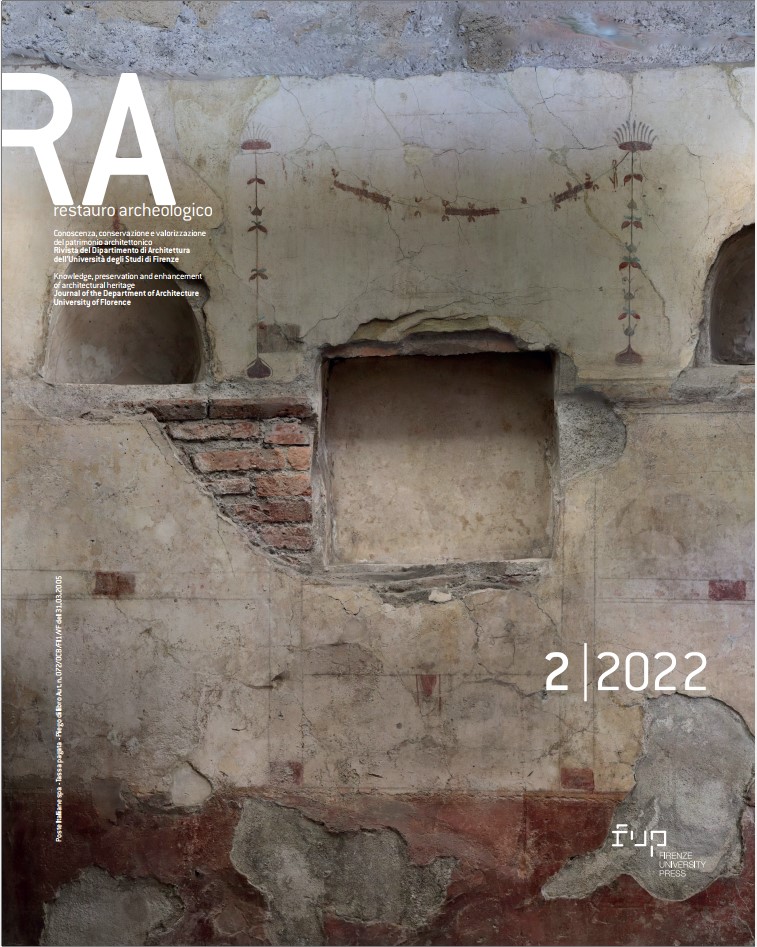Roma, Sepolcreto della via Ostiense: le pitture murali e la loro conservazione. Tecnica, modalità decorative, cronologia
Published 2023-07-24
Keywords
- Necropolis,
- paintings,
- pigments,
- diagnostic investigations,
- conservation
How to Cite
Copyright (c) 2023 Simona Pannuzi, Marina Marcelli, Cecilia Balsi, Carla Giovannone, Mauro Torre, Stefano Ridolfi

This work is licensed under a Creative Commons Attribution 4.0 International License.
Abstract
Along via Ostiensis, near the St. Paul’s Basilica, an important part of a roman cemetery was digged up in 1917 during roadworks and now it is still visible. This funerary area, where the most common typology is a small familiar building (columbarium), was dated from the 2nd century B.C. to 3rd-4th century A.D. At the end of the archaeological survey, only a little part of the funerary area was restored, provided with a covering and opened to the public. Elegant paintings of natural and mythological elements decorate most of the tombs, in some cases also connected with stucco decorations, and they constitute one of the most significant testimonies of the funerary art in Rome. Actually, an interdisciplinary research is focused to the study of the painted decorations, with the analysis of the painting technique and the pigments used. Moreover, based on the study of the successive restorations carried out during the twentieth-century and actual conservative state of the funerary building decorations, the investigation of the degradation phenomena of these architectural surfaces is in progress, in order to the monitoring, the maintenance and the conservation of these important frescos.

